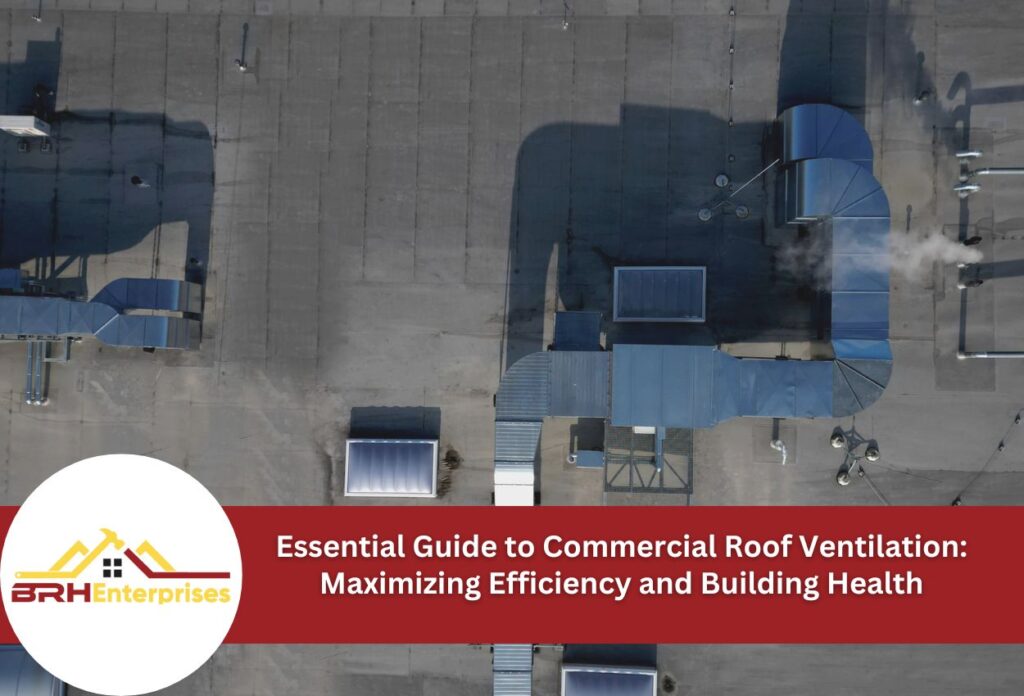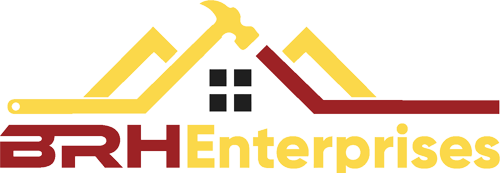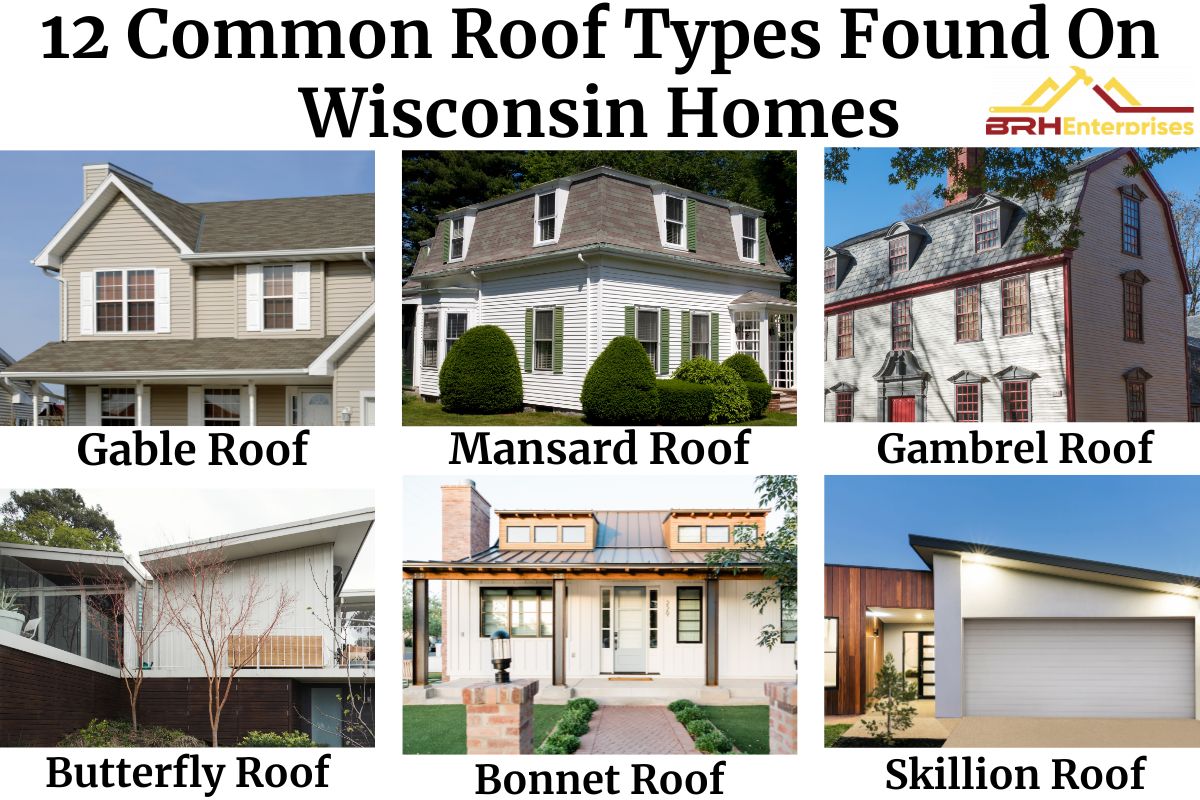Essential Guide to Commercial Roof Ventilation: Maximizing Efficiency and Building Health

Ventilation is a cornerstone of commercial building health and efficiency. For Southern Wisconsin businesses, where temperatures swing from freezing winters to humid summers, commercial roof ventilation systems play a critical role in maintaining structural integrity and indoor comfort. These systems work continuously to regulate airflow, prevent moisture accumulation, and balance indoor temperatures — directly impacting energy costs and building longevity.
Commercial roof ventilation operates on a simple principle: creating balanced airflow that removes hot, moist air while introducing fresh air. This exchange prevents the damaging effects of trapped moisture that can lead to mold growth, rotting structural components, and premature roofing failure. For flat commercial roofs common throughout Wisconsin’s industrial areas, specialized exhaust vents and industrial roof ventilators provide targeted solutions for these unique architectural challenges.
Beyond structural protection, effective rooftop ventilation solutions contribute significantly to indoor air quality and employee comfort. Commercial ridge vents and energy-efficient ventilation systems reduce cooling costs during summer months while preventing ice dam formation in winter. The right ventilation strategy not only extends the roof’s lifespan but also improves building performance, making it essential for facility managers and property owners to invest in.
Types of Commercial Roof Ventilation Systems for Different Building Designs
Commercial buildings in Southern Wisconsin require carefully selected ventilation systems that match both their architectural design and functional needs. For flat roofs, which dominate commercial landscapes in Milwaukee and Madison, gravity ventilators and exhaust fans provide essential air circulation without compromising the roof’s integrity. These commercial exhaust vents for flat roofs are strategically positioned to create optimal airflow patterns across large surface areas.
Sloped roof structures benefit from commercial ridge vents running along the peak, paired with soffit vents that allow fresh air intake at the eaves. Metal roofing systems, popular for their durability in our harsh climate, typically utilize specialized turbine ventilators that operate effectively even during our region’s unpredictable weather patterns.
The choice between passive and mechanical ventilation depends largely on building size and usage patterns. Passive systems like static vents harness natural air movement and require no energy input, making them cost-effective for smaller structures. Mechanical systems, including powered exhaust fans, provide consistent airflow regardless of weather conditions — essential for manufacturing facilities, commercial kitchens, and other high-moisture environments. Many Southern Wisconsin businesses find that a hybrid approach using energy-efficient commercial roof venting options yields the best results, combining natural ventilation with targeted mechanical systems that activate when needed.
The Impact of Proper Ventilation on Commercial Building Performance
Strategic roof ventilation delivers measurable benefits to commercial buildings throughout Wisconsin’s challenging climate cycles. When correctly implemented, commercial roof ventilation systems significantly reduce energy consumption by preventing heat buildup during summer months. This thermal regulation reduces the strain on air conditioning systems, with some businesses reporting cooling cost reductions of up to 30% after ventilation upgrades. During winter, these same systems prevent warm air stagnation that can lead to damaging ice dam formation.
Beyond energy savings, industrial roof ventilators create healthier indoor environments crucial for employee productivity and customer comfort. Proper airflow dilutes indoor pollutants and maintains consistent temperatures throughout large commercial spaces. This is particularly important in manufacturing facilities, retail environments, and warehouses where temperature fluctuations can impact operations and inventory.
Perhaps most critically, commercial exhaust vents for flat roofs provide moisture control. Wisconsin’s humidity and seasonal precipitation create perfect conditions for condensation within building envelopes. Effective rooftop ventilation solutions prevent this moisture from accumulating, protecting against structural damage, mold growth, and inventory degradation. For businesses storing sensitive materials or products, these ventilation systems safeguard against humidity-related losses while extending the operational lifespan of the building itself.
Industrial Ventilation Solutions for Manufacturing and Warehouse Facilities
Manufacturing and warehouse facilities in Southern Wisconsin sometimes face more ventilation challenges due to their operational requirements. These industrial environments often generate significant heat, airborne particulates, and chemical vapors that require specialized commercial roof ventilation systems designed specifically for these demanding conditions. Industrial roof ventilators must not only manage standard air exchange but also address safety compliance regulations and protect both building infrastructure and worker health.
Large manufacturing facilities benefit from strategically placed powered exhaust systems that can handle high-volume air movement. These systems effectively remove process heat, fumes, and contaminants while maintaining proper air pressure throughout the facility. For warehouse environments with extensive storage areas, gravity ventilators provide cost-effective solutions that operate without electricity, utilizing natural thermal dynamics to maintain continuous airflow across vast roof expanses.
Wisconsin businesses with specialized industrial processes often require custom ventilation configurations. Metal fabrication shops need commercial exhaust vents for flat roofs that can handle metallic particulates, while chemical processing facilities require corrosion-resistant rooftop ventilation solutions. Our local roofing experts work with industrial facility managers to design integrated systems that balance energy efficiency with operational requirements. By implementing the right commercial ridge vents and energy-efficient commercial roof venting strategies, manufacturing facilities can reduce cooling costs while meeting strict industrial air quality standards.
Energy-Efficient Ventilation Strategies for Modern Commercial Buildings
Today’s commercial buildings in Wisconsin are embracing innovative ventilation technologies that maximize efficiency while minimizing environmental impact. Solar-powered ventilation systems are gaining popularity among forward-thinking business owners, utilizing daylight hours to power exhaust fans without drawing from the grid. These systems work particularly well during summer months when ventilation needs align perfectly with peak solar production. Thermal-controlled systems offer another sustainable approach, automatically adjusting airflow based on temperature differentials to maintain optimal conditions without wasting energy.
Smart ventilation represents the cutting edge for commercial properties, using sensors that monitor humidity, temperature, air quality, and occupancy levels to dynamically adjust airflow. These systems can integrate with building automation controls, creating responsive environments that adapt to changing conditions throughout Wisconsin’s varied seasons. For buildings with consistent operational patterns, programmable ventilation schedules offer simplified efficiency without complex technology.
The investment in energy-efficient commercial roof venting systems can result in high returns over time. Most businesses see utility savings after upgrading to modern ventilation systems, with payback periods typically within a few years, depending on building size and usage patterns. Beyond direct energy savings, proper ventilation extends roof lifespan by preventing moisture damage and reducing thermal stress. Many Wisconsin businesses also benefit from available tax incentives and utility rebates when implementing qualified energy-efficient roof ventilation solutions, further enhancing the long-term value proposition.
Installation Considerations and Best Practices for Commercial Roof Ventilation
Successful commercial roof ventilation begins with a thorough pre-installation assessment. Building owners must ensure compliance with Wisconsin’s specific building codes, which often have detailed requirements for commercial ventilation rates based on occupancy type and square footage. Local climate considerations are equally important — Southern Wisconsin’s freeze-thaw cycles and heavy seasonal precipitation create unique challenges that ventilation systems must address. Before installation, a comprehensive evaluation of the existing roof condition, structural support capabilities, and current HVAC integration points will prevent complications later.
Proper sizing calculations form the foundation of effective ventilation design. Commercial buildings require precisely balanced intake and exhaust ratios based on building volume, usage patterns, and occupancy levels. For optimal performance, industrial roof ventilators should be strategically positioned to create uniform airflow across the entire roof surface, with special attention to problem areas like corners and parapets where air can stagnate. Flat commercial roofs typically benefit from evenly distributed commercial exhaust vents that work in harmony with the building’s natural air movement patterns.
While DIY approaches might tempt budget-conscious facility managers, professional installation by qualified commercial roofing contractors delivers superior results and important warranty protections. Experienced roofers understand how to install flashing and seal rooftop ventilation penetrations, integrate commercial ridge vents with existing structures, and implement energy-efficient commercial roof venting systems without compromising the roofing system’s water-tight integrity. Professional installation also ensures that all electrical connections for powered systems meet safety codes, protecting both your building and business operations.
Maintenance and Troubleshooting Commercial Ventilation Systems
Regular maintenance is vital to ensuring commercial roof ventilation systems operate at peak efficiency throughout Wisconsin’s challenging seasons. A proactive maintenance approach means potential issues are caught before expensive repairs or system failures develop. For Southern Wisconsin businesses, establishing a consistent inspection schedule allows for adjustments as the building’s needs change from summer cooling to winter moisture control.
Fall maintenance should focus on clearing debris that can block industrial roof ventilators and checking seals around commercial exhaust vents for flat roofs. Winter inspections should verify that ice buildup isn’t restricting airflow, particularly around mechanical components. Spring maintenance typically involves checking fan motors, belts, and electrical connections on powered systems, while summer inspections should confirm that all vents are unobstructed and operating efficiently during peak cooling demand.
Common warning signs of ventilation problems include unusual odors, excess condensation on windows, uneven temperatures throughout the building, and unexplained increases in energy costs. If you notice moisture stains on ceilings, mold growth, or excessive humidity, your commercial ridge vents may be underperforming. Most roof ventilation solutions benefit from professional inspections at least annually, with energy-efficient commercial roof venting systems requiring specialized maintenance to preserve their performance advantages and protect your building.
Optimize Your Commercial Building with Expert Roof Ventilation Solutions from BRH Enterprises LLC
Ensuring that your commercial property in Southern Wisconsin has an efficient roof ventilation system is not just about improving air quality — it’s crucial for reducing energy costs, protecting structural integrity, and improving overall building health. At BRH Enterprises LLC, we specialize in providing top-tier commercial roof ventilation systems designed to meet the needs of your business. Whether you require installation, maintenance, or a complete overhaul of your existing system, our expert team is equipped to deliver high-quality solutions.
Don’t let inadequate ventilation compromise your building’s performance and safety. Contact BRH Enterprises LLC today at (920) 249-4228 to discuss your ventilation needs and how we can assist in creating a more efficient and comfortable environment for your commercial space.

Bryce, Master Roofer
Protect Your Home with Expert Roofing
Don’t wait for leaks or storm damage to cause costly repairs. Our experienced roofing team provides fast, reliable service, high-quality materials, and lasting results. Ensure your home stays safe, secure, and looking great—contact us today for a free estimate.




